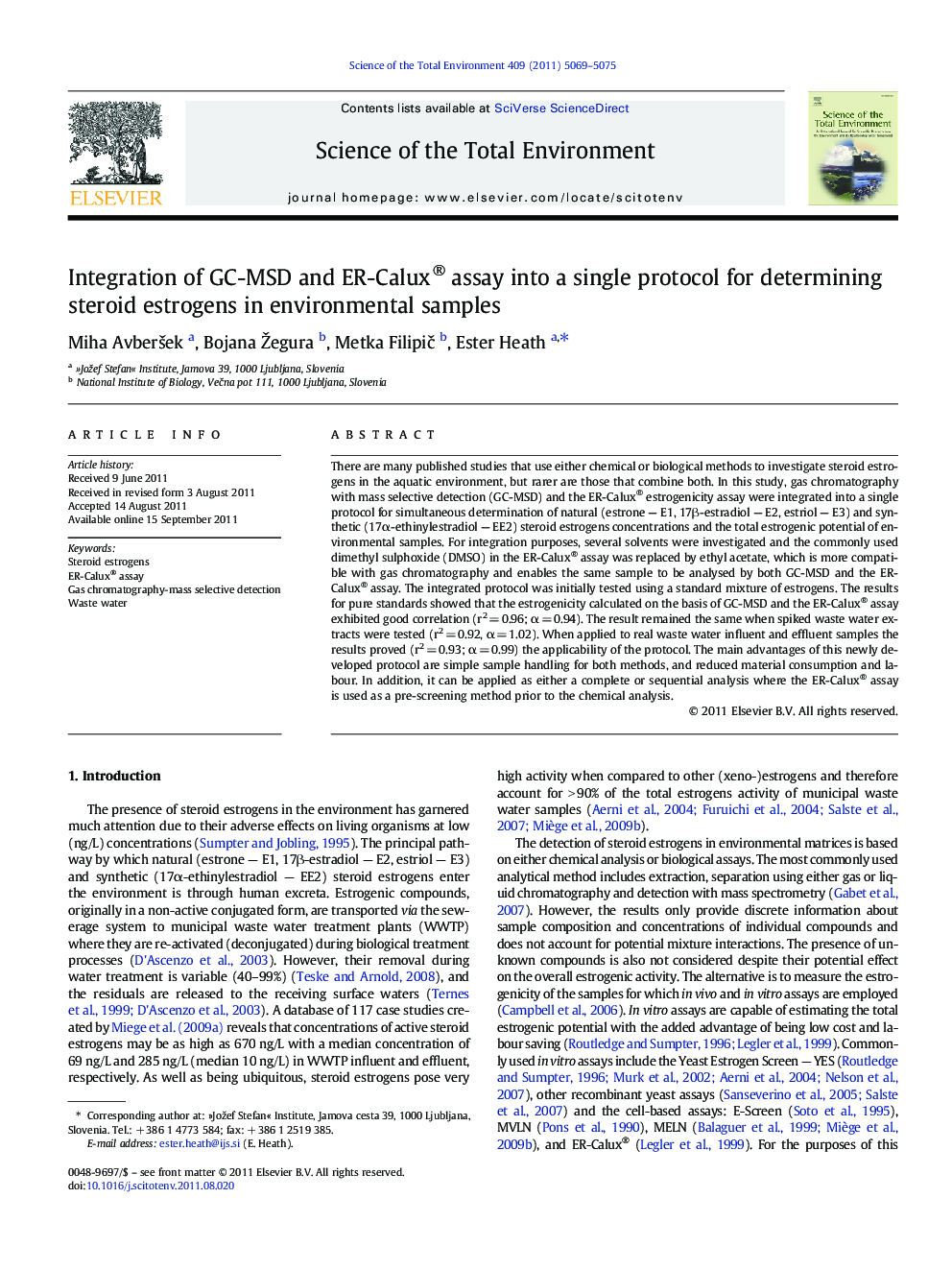| Article ID | Journal | Published Year | Pages | File Type |
|---|---|---|---|---|
| 4430182 | Science of The Total Environment | 2011 | 7 Pages |
There are many published studies that use either chemical or biological methods to investigate steroid estrogens in the aquatic environment, but rarer are those that combine both. In this study, gas chromatography with mass selective detection (GC-MSD) and the ER-Calux® estrogenicity assay were integrated into a single protocol for simultaneous determination of natural (estrone — E1, 17β-estradiol — E2, estriol — E3) and synthetic (17α-ethinylestradiol — EE2) steroid estrogens concentrations and the total estrogenic potential of environmental samples. For integration purposes, several solvents were investigated and the commonly used dimethyl sulphoxide (DMSO) in the ER-Calux® assay was replaced by ethyl acetate, which is more compatible with gas chromatography and enables the same sample to be analysed by both GC-MSD and the ER-Calux® assay. The integrated protocol was initially tested using a standard mixture of estrogens. The results for pure standards showed that the estrogenicity calculated on the basis of GC-MSD and the ER-Calux® assay exhibited good correlation (r2 = 0.96; α = 0.94). The result remained the same when spiked waste water extracts were tested (r2 = 0.92, α = 1.02). When applied to real waste water influent and effluent samples the results proved (r2 = 0.93; α = 0.99) the applicability of the protocol. The main advantages of this newly developed protocol are simple sample handling for both methods, and reduced material consumption and labour. In addition, it can be applied as either a complete or sequential analysis where the ER-Calux® assay is used as a pre-screening method prior to the chemical analysis.
►Steroid estrogen concentrations and sample estrogenicity were simultaneously determined. ►GC-MSD and ER-Calux® assay gave comparable results of spiked samples. ►The method was successfully applied on real waste water samples. ►The method enables simple sample handling, reduced material consumption and labour.
